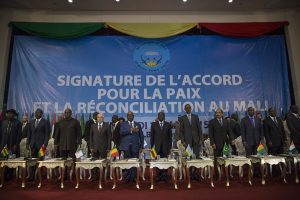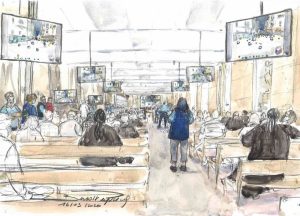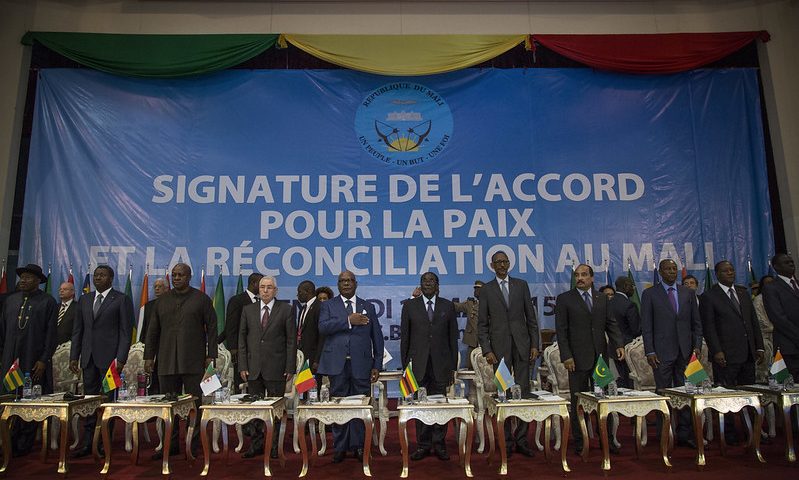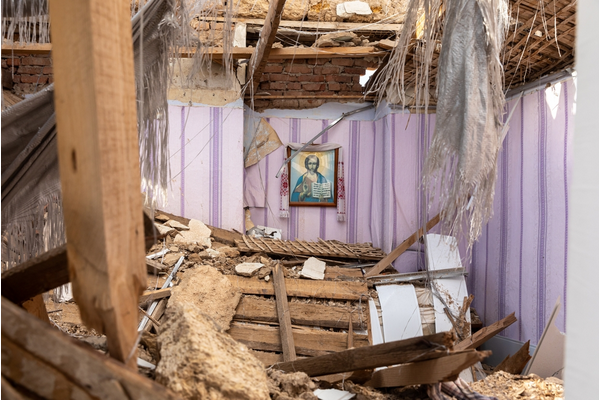

On the State and Religions in France
15 December 2022Researchers and PhD Candidates Working on Armed Conflicts
16 April 2023South Africa, former Yugoslavia, Rwanda, post-communist Eastern Europe, post-dictatorship Latin America …: since the 1990s, many countries have had to negotiate a transition from violent internal conflicts to often democratic peace. In her latest book Comment sortir de la violence ? Enjeux et limites de la justice transitionnelle (How to end the violence? Stakes and limits of transitional justice, CNRS Editions, April 2022), Sandrine Lefranc, CNRS research director at the Centre for European and Comparative Studies, examines ‘transitional justice’ initiatives by questioning their assumptions, implementation, and results. Interview.
What is transitional justice and when did it appear?
Sandrine Lefranc: The expression ‘transitional justice’ encompasses a set of proposals and measures aiming to establish peace and reconciliation after mass violence (genocide, civil wars, dictatorial repression). Symbolic measures are favoured: establishing the truth about what happened, identifying the perpetrators and the victims, repairing the damage, reforming criminal states, developing a remembrance policy, and reconciling societies. Proponents of this idea – human rights activists, academics, government actors, and international organisations – seek to interlink all these measures into a coherent policy.
Transitional justice emerged at the end of the Cold War, as dictatorships gave way to democratically elected governments. These changes were not clean breaks. Rather, they built on compromises with the existing regimes. When you negotiate democratisation with a dictator supported by an army, it is difficult to send him to prison! Transitional justice must enable social peace and consolidation of the young democratic regime, and too bad if ties to the former regime remain strong. Transitional justice is therefore a negotiated justice that tries to reconcile these concessions with victim expectations by recognising the crimes but most often without punishing them, since the new judicial institutions remain subject to political compromise. While the development of international criminal justice has enabled prosecution of some high-level officials, this only covers a small number of the perpetrators of abuse.
If the criminals are not necessarily punished, what concrete measures have been put in place to restore peace and turn the page on painful conflicts while preserving their memory?
Peacekeepers Rwanda Make Peace: Promote unity and reconciliation. Crédit photo : Dave Proffer. CC BY 2.0 via Flickr
S.L. : Political criminals are generally not criminally punished, but Rwanda is a notable exception. The military-led government that won the war and ended the Tutsi genocide in 1994 succeeded in imposing a form of maximal justice by prosecuting nearly two million participants in the genocide. Rather than transitional justice, which primarily addresses situations without winners or losers, it is a form of victor’s justice, like the one we experienced after World War II.
Going back to transitional justice, its most emblematic feature is the truth and reconciliation commission [originally called the truth commission], which has been implemented in more than fifty countries, from post-dictatorship Latin America to the United States addressing the past of the civil rights movement(1)I am thinking in particular of the Truth and Reconciliation Commission set up in the city of Greensboro. It was created in 2006 at the initiative of a citizen’s movement, and its purpose was the murder of five activists by the Ku Klux Klan during a rally. To learn more: Amérique latine et reste du monde les voyages internationaux de la « justice transitionnelle , Sandrine Lefranc, in Revue des droits de l’homme, 2012. The mission of these institutions is to listen to the victims, recognise their suffering, and makes amends. They must also establish the truth, write the history, make it known, and educate. The most successful example of this approach is post-apartheid South Africa, where the Commission listened for two years to more than 21,000 victims speaking in eleven different languages.
Contrary to ordinary criminal justice, transitional justice therefore grants an important role to the victims. However, you underscore that while victims are heard, their speech is highly controlled…
S.L. : This is indeed one of the limitations stemming from the political compromise: the idea is to listen to the victims, but forbid them to express their anger and seize this moment as an opportunity to denounce the criminals. The victims are expected to keep to their individual suffering and trauma: the ‘good victim’ is engaged in a healing process, working to find peace, and free of political demands.
Another consequence of compromising with the outgoing regime is that protagonists from all sides are recognised as victims, provided they have lost a loved one or have been injured. To take the example of South Africa, the Truth and Reconciliation Commission listened to both ‘ordinary’ anti-apartheid victims and the wives of soldiers from the segregationist regime who had fallen on the front in a neighbouring country.
Beyond these limitations, have any transitional justice processes failed? If so, for what reasons?

Signing Ceremony of Peace Agreement in Mali. Crédit photo : United Nations CC BY-NC-ND 2.0 via Flickr
S.L. : By silencing political exchanges, transitional justice measures can postpone conflicts rather than resolve them: a few years later, when the political context has changed and the perpetrators of the violence have retired, the debates return to the forefront. This is what has happened in the countries of the Latin American Southern Cone. By pushing a ‘reconciliation’ objective, transitional justice policies that cast peace as overcoming hostilities between groups frozen in their war identity, are overly ambitious and poorly conceived…
Before wanting to make peace, we should start by asking ourselves what we mean by this word. We too often think that there is a clear break between war and peace, as if war were hateful anarchy and peace a civil concord. Western experts thus project their fantasies onto the countries they advise, enabling them to transpose our routine methods (alternative conflict resolution and therapy, for example). We want a lasting and positive peace for them, harmony between enemy camps, strong social diversity, and a common history. Let’s be honest though and admit that from Paris to London, we need to look in the mirror. If we take the time to ask ourselves why peace policies are what they are, and bear in mind the continuities between war and peace, we can better understand the failure of many of these policies, what we can expect from them, and how to improve them.
You are currently working on the trials of the 2015 and 2016 terrorist attacks in France. Do these trials have anything in common with transitional justice arrangements?

Trial of the terrorist attacks of November 13, 2015 © Benoît Peyrucq / ProMeTe team
S.L. : Yes, there are many similarities and I am writing an article on this issue with Sharon Weill, a legal scholar and associate researcher at CERI. However, I must point out that unlike transitional justice the trials against the presumed perpetrators of the terrorist attacks set penal mechanisms in motion. Criminal law is even toughened, for example through the broad definition of terrorist criminal association. But these trials introduce the question of transitional justice in France, primarily because the attacks have claimed hundreds of victims and injured thousands. The challenge for the criminal court is to make room for them and their families. It succeeded in doing so by giving them time and allowing them to step outside the typical procedural framework. Thus, during the nine-month trial for the November 13 attacks, two months were devoted to the victims’ testimony. Families were able to project photos of their dead and pay tribute to them, and the survivors were able to recount their sufferings. At times, this was akin to a truth commission. The other commonality was the question asked. Many of the terrorists are fellow citizens. And the trials, often through the voices of the victims, raise the question of civil violence, as does transitional justice. Doing justice is no longer just about condemning an individual, but also explaining collective violence and trying to rebuild society… How can justice make our societies more liveable? How can it educate us – if it can – in order to prevent crimes? These challenges are also ours.
Statements gathered by Véronique Etienne and Sébastien Wony, CEE
A CNRS research director at the Center for European Studies and Comparative Politics, Sandrine Lefranc is a political scientist. She critically examines how peace, ‘memory’, and justice (‘transitional’ or ‘restorative’) policies attempt to respond to mass violence and prevent the return of political conflict.
Notes
| ↑1 | I am thinking in particular of the Truth and Reconciliation Commission set up in the city of Greensboro. It was created in 2006 at the initiative of a citizen’s movement, and its purpose was the murder of five activists by the Ku Klux Klan during a rally. To learn more: Amérique latine et reste du monde les voyages internationaux de la « justice transitionnelle , Sandrine Lefranc, in Revue des droits de l’homme, 2012 |
|---|



